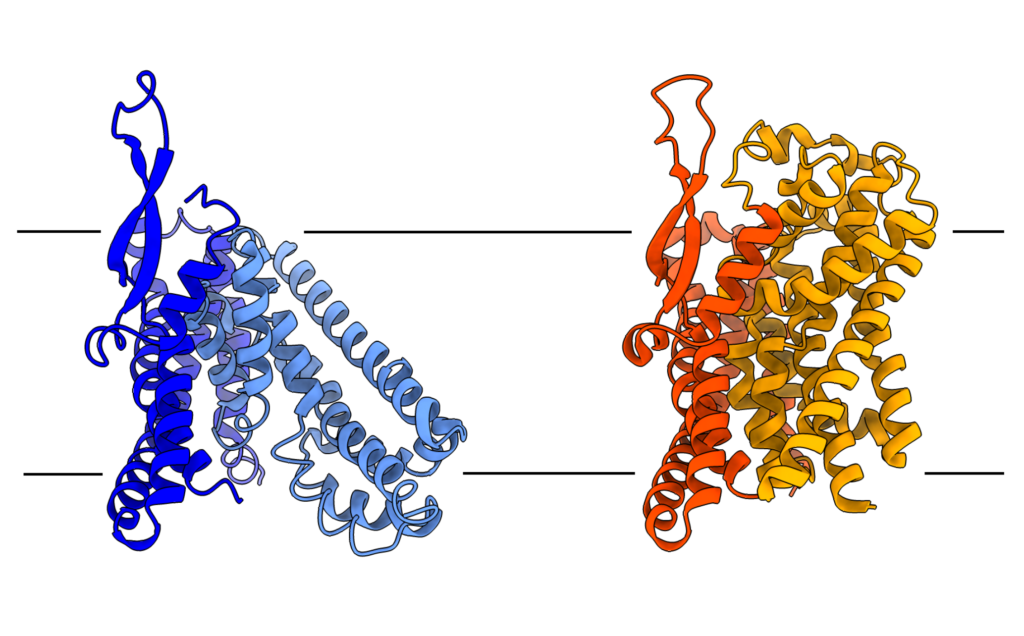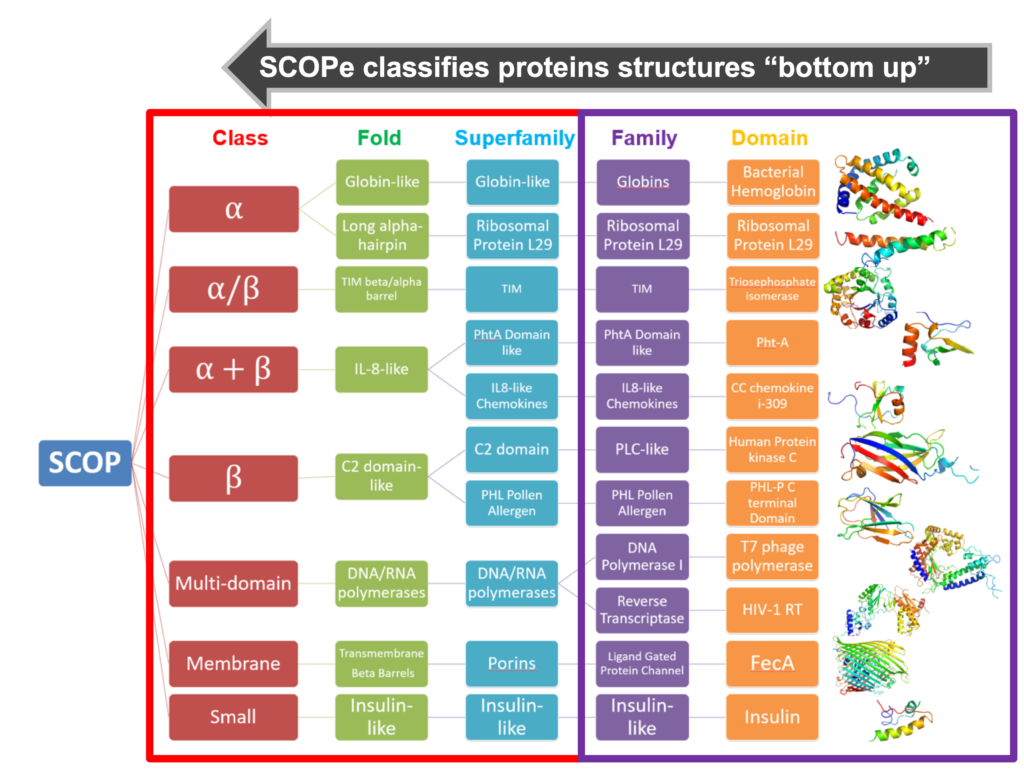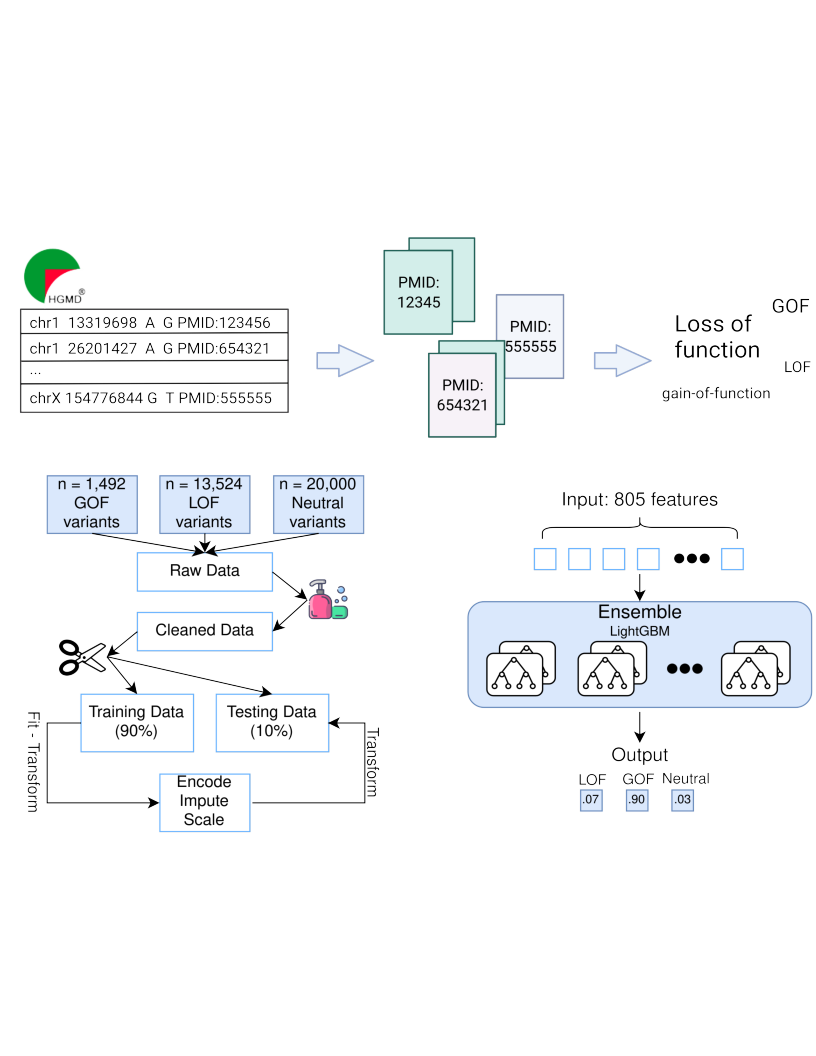 Figure adapted from Schlessinger & Bonomi, eLife 2022
Figure adapted from Schlessinger & Bonomi, eLife 2022
Structure-Based Drug Design for Membrane Transporters
In humans, there are over 400 Solute Carrier (SLC) transporters that modulate the import and efflux of solutes, including neurotransmitters, ions, nutrients, and drugs, across the cell membrane. The SLCs include structurally and functionally diverse families, utilizing various energy coupling mechanisms to drive transport. Genetic variations in SLC members can cause a range of diseases, such as diabetes, cancer, and neurological disorders. Despite their biological importance, compared to other gene families of similar size, the SLCs are significantly understudied: structures of only few SLCs have been determined at atomic resolution, many SLCs are orphans with unknown function, and there is a limited number of useful chemical tools to study their function. Our overarching goal is to describe the structure and function of SLC transporters, and develop novel strategies to control their activity, using computational and experimental approaches. Over the past decade, we have developed computational methods to characterize SLCs, and applied these methods to study multiple pharmacologically important nutrient SLC transporters, such as those associated with cancer and neurological and metabolic disorders, as well as those that play a key role in drug absorption, distribution, and dynamics. For example, the glutamine transporter ASCT2 plays a key role in cancer metabolism . One of our goals is to develop inhibitors that deprive tumors from nutrients.

Protein Kinases: Structure, Function, and Drug Discovery
Protein kinases catalyze the phosphorylation of target proteins (substrates), thereby modulating the functional activity of the targeted substrate. It is estimated that about 30% of the human proteome is phosphorylated by kinases. Kinases are involved in a variety of physiological functions, such as signal transduction, transcription, development, and cell cycle regulation. Thus, dysregulation of protein kinases is associated with many diseases, including cancer, metabolic diseases, and central nervous system disorders. More than 70 drugs targeting kinases have been approved by the FDA, making them one of the most druggable protein families. We are developing a variety of approaches to model kinases in different ‘druggable’ conformations, design small modulators of their function, and predict kinase-substrate interactions. For example, the above figure shows four major conformations of kinases, and the different ‘type’ of drugs they bind. We focus on established kinase targets as well as on understudied ‘dark’ kinases. Our kinase discovery platform provides a framework for designing potent kinase inhibitors with optimal binding profiles that target disease signaling pathways.

Structural Bioinformatics and Systems Pharmacology
Systems pharmacology has emerged as a discipline that focuses on drug action at the organ level to a discipline that combines traditional pharmacokinetic and pharmacodynamic modeling with recent systems and structural biology approaches. Structural biology has long been an area in which experimental data and computational modeling have been integrated to obtain biological knowledge. We develop structural bioinformatics tools to describe mechanisms of diseases and drugs, using a variety of machine learning techniques. We combine structural data on protein drug targets with cheminformatic, transcriptomic, and electronic medical records, as well as other omic data, to develop future drugs. Finally, we combine highthroughput genomic information, natural language processing (NLP), and protein structure prediction, to predict the effect of disease mutations on protein function and disease networks.

Machine Learning and Drug Design
Artificial intelligence (AI) or Machine learning (ML) has emerged as essential tool to advance drug discovery. Recent developments in machine learning architectures as well as improvements in relevant hardware have allowed the advance of more effective approaches, improving different stages of the drug development process, from target discovery to drug optimization. In our lab, we develop and apply a variety of state of the art ML tools to address different problems in the drug discovery pipeline. For example, LogGoFunc is a method predicting whether a mutation is likely to be Loss-of-Function (LOF) or Gain-of-Function (GOF), thereby improving our understanding of disease mechanisms and providing potential drug targets. We also apply various ML to identify conformation-specific small molecule compounds and predict cardiotoxicity of cancer drugs, as well as to evaluate the association between disease states and drug structure.